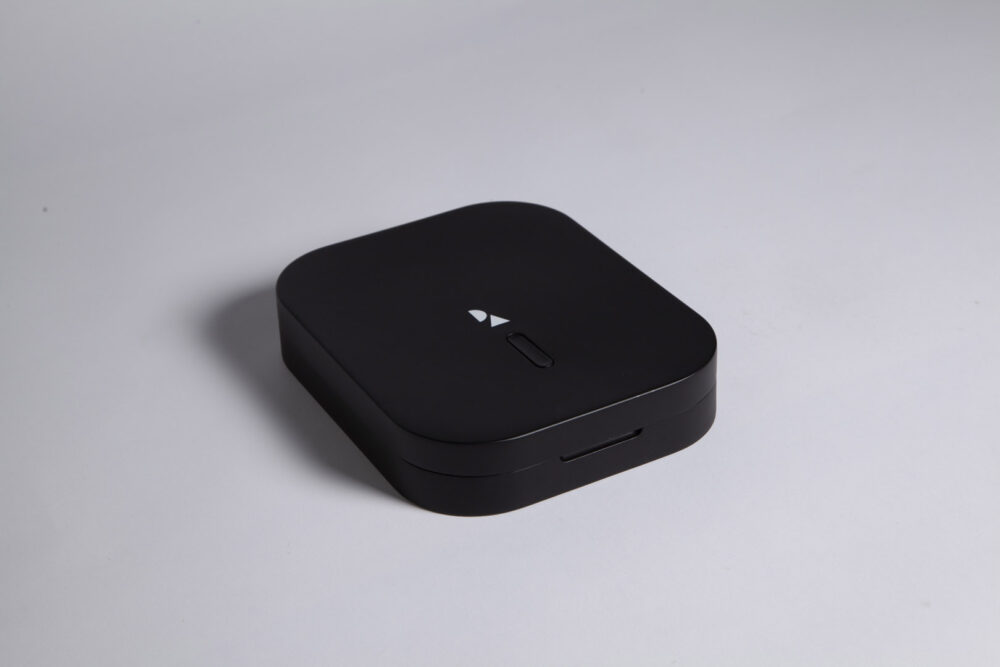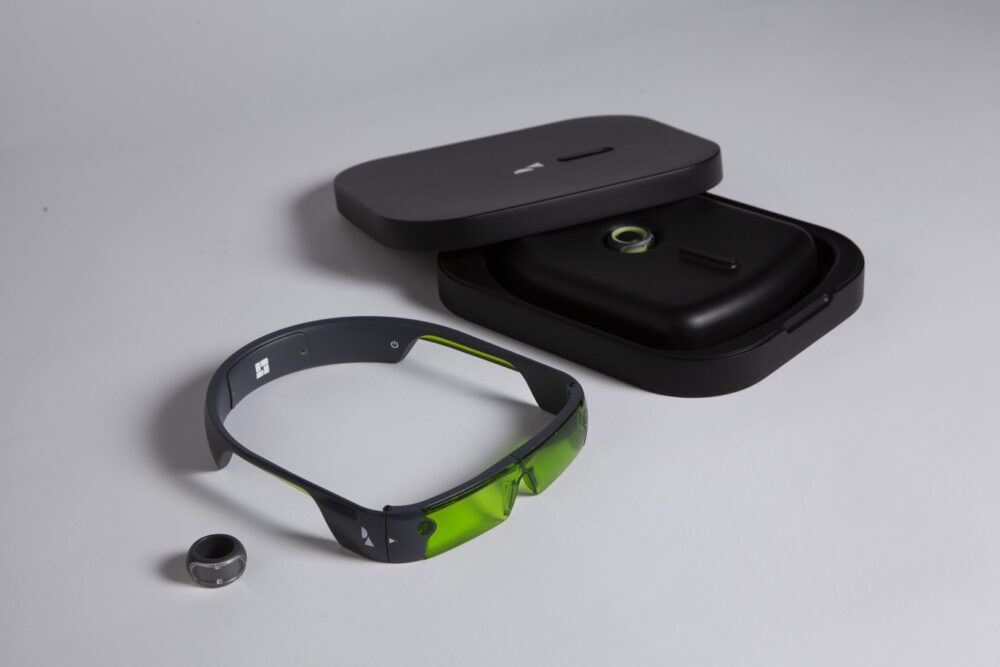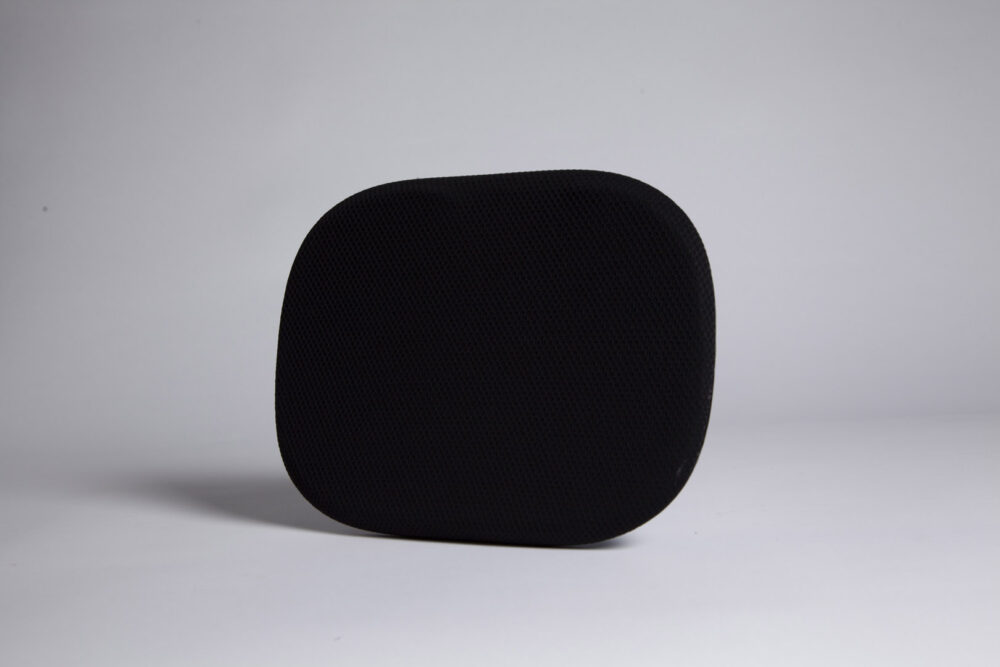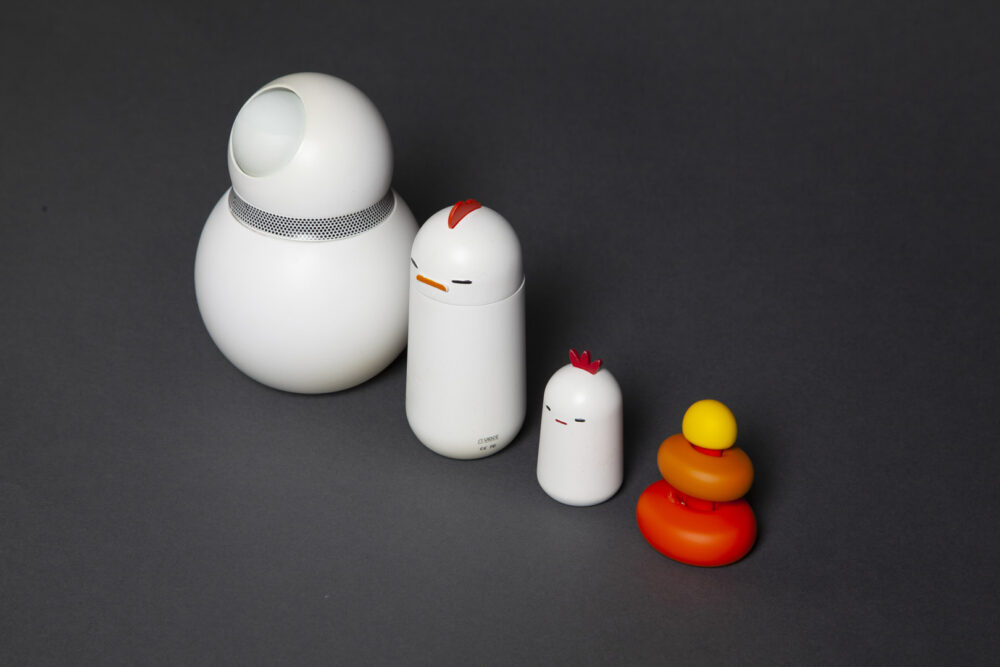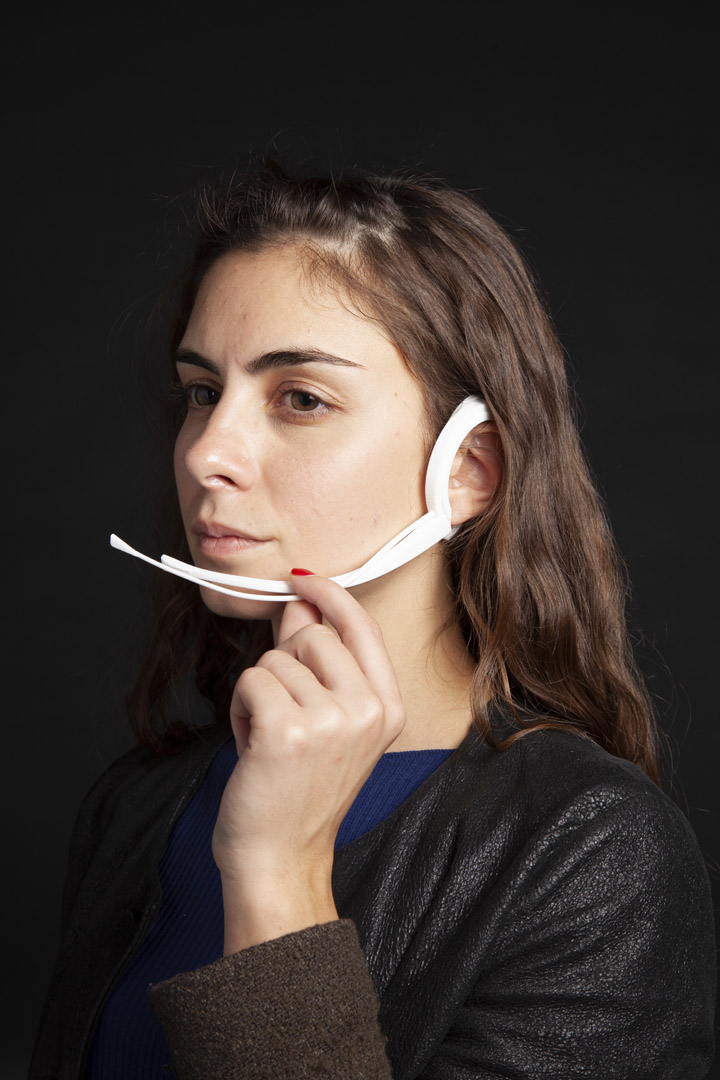2020
Design for the New Normal
Envisioning the future of a pandemic society and designing for our transformed way of living
In March 2020 I was invited by Domus Academy, one of the most historic and prestigious postgraduate design school in Milan, to lead the Envisioning Workshop inside the Master in Product Design.
Titled “The New Normal – A new tool for COVID19 and after”, the workshop saw students from all over the world work remotely to envision the long term impact of the pandemic on the society, in a scenario spanning between 2025 and 2050, and design innovative systems and solutions for our transformed way of living.
Together with the assistance of Erika Baffico and the mentorship of Aoi Hasegawa, we embarked on a design journey that embraced many disciplines like design research, user analysis, scenario building, speculative design, and of course all the main phases of a product design development process.
The workshop covered the entire month of May and concluded with the definition of 9 conceptual projects. The very interesting results prompted Domus Academy to ask us to develop the projects further during the summer and have the students present them for their final career graduations, in September.
Here’s a summary of this very interesting journey and a presentation of some of the best projects realized.
01.
THE DOMUS ACADEMY BRIEF
The design request of the school for the workshop

“Design an object / furniture / system / new living scenario, which helps us sheltering at home and having better lives during an outbreak or an emergency. It is important to imagine innovative scenarios, as well as design proposals. The design solution can promote physical and mental wellness, by including actual technologies and cutting-edge innovation in the new daily routine. The scenarios must be applied to a future time frame, ranging between 2025 and 2050.”
02.
INNOVATION TRAJECTORIES
An additional framework to map today’s signals of change
After the appearance of the Covid-19 the world is undergoing rapid and profound transformations that will impact and change on different levels our way of living in our immediate but also distant future. A new territory to navigate for designers, made of many new challenges, responsibilities and opportunities. We encouraged the students to explore this new landscape of innovation, by providing a possible ‘framework’ to read and elaborate the signals of transformation coming our way from this crisis and from the latest evolutions in technology and society. Drawing also from the related topics explored with Estensione at Politecnico di Milano, this framework is made of 5 trajectories, each describing the continuums created by the connection and blending of apparently opposite fields and topics: the biological with the technological, the human and the artificial, the microscopic dimension with the macroscopic dimension, the inside with the outside, individuals and the society.





03.
EMERGING SCENARIOS FROM THE PANDEMIC
Early research and lectures given to the class to kickstart the project

We prepared an early research, comprising relevant case studies and discussion topics which tried to reflect how the pandemic will impact our lives. The crisis triggered multiple changes along different layers of society, some of them more tangible and direct, others more subtle, that will cause effects in the not so immediate future. Designers must get used to read and interpret complicated and mixed signals coming from different angles and sectors of reality, in oder to innovate and create meaningful products and solutions. The innovation trajectories and the interpretation of these case studies were the subject of the very first lecture given to the class.












The images above are a selection from the deck of slides shown during the first remote lecture to the class. They represent case studies and discussion topics useful to introduce the research work that the students had to embarked on.
04.
STUDENTS’ RESEARCH & SCENARIOS
The expansion of the preliminary work done by students
Students carried on the research by gathering data, articles, and many additional case studies, therefore expanding the possibile areas of intervention for the workshop.
With this first endevour we asked them also to describe a specific scenario for their concepts set in the future, in a timeframe between 2025 and 2050.

This is a selection of pages from the early research work done by multiple student groups. Credits in order: Tz-Yun Huang, Wen-Heng Chang, Xin Chen, Pallavitha Halaga, Mahoko Arai, Linyi Yao, Kübra Araz, Sukru Kaptanoglu, Juan Cruz Del Granado, Maxime Bonamie, Andrés F. Vásquez, Varvara Erikhova, Cheng Ting Chen, Tian Ze Chen, Nien Chen Lee
04.1
User analysis & daily routines
The research expanded to include also an analysis of how the daily behaviors of people will change in the immediate and distant future. In order to do so, we provided two templates to profile possible users, analizing their psychological and attitudinal attributes, and defining a future daily routine. This excercise was critical to uncover new problems and needs that future products, services or systems could give an answer to.
User analysis template

Daily routine template


Works above by Tz-Yun Huang, Wen-Heng Chang, Xin Chen, (first row); Varvara Erikhova (second row); Aishwarya Ashwin Vanikar (third row); Cheng Ting Chen, Tian Ze Chen, Nien Chen Lee (fourth row); Linyi Yao, Kübra Araz, Sukru Kaptanoglu (fifth row)
04.2
New Normal’s Innovation Landscape
The research and scenario phase, all together represented the definition of an incredibly rich landscape of opportunities for design. From health and medicine, to work, relationships and domestic environment, to food, fashion, mobility and the uban space, a “New Normal” means that basically every aspect of our life and society will change in the near or distant future, with new problems and needs waiting for the crucial contribution of design. With this important work, students were able to identify several market fields and innovation areas ready to be explored by the consequent elaboration of their concepts, products and solutions.
This chart connects the innovation trajectories proposed at the beginning of the workshop with several innovation sectors. It was provided to all students to help them identify areas of opportunity and intervention for their visions and projects.
This version above depicts the mapping of all case studies researched and presented within the first lecture, combined with all the major topics explored by students with their research and scenario work.
05.
INTERDISCIPLINARY & SPECULATIVE DESIGN
A lecture to expand the design perspectives on the New Normal

To expand the horizons of the project we prepared a lecture on what I consider the cornerstone of my approach to design: interdisciplinarity. We explored the relationship between artifacts, meaning and human beings. In today’s complex innovation scenario, there are no distinct boundaries between products, spaces, interfaces, services and communication channels, and this phenomenon will certainly grow in the future. Designers, therefore, must be prepared to expand their niche of specialization and learn to shape complex product ecosystems, that integrate multiple professional competences and touch multiple domains of reality.




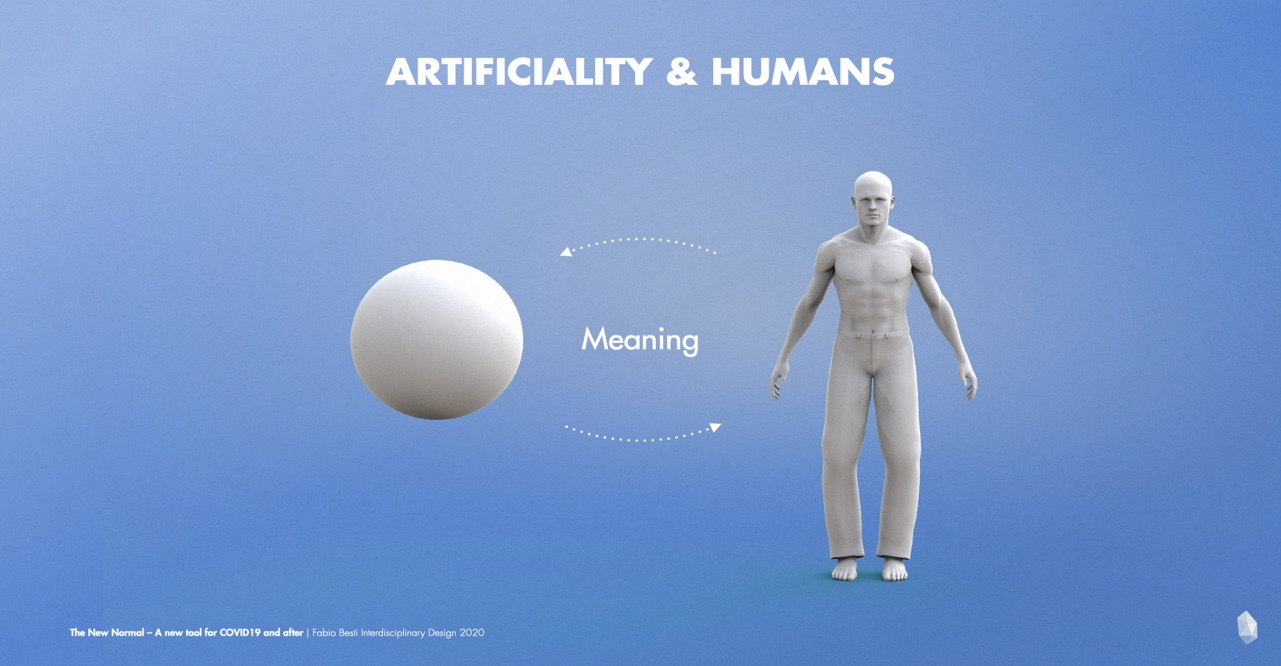



This is a selection of slides from the lecture ‘Interdisciplinary Design and Product Ecosystem’.
Check out the entire presentation here on Slideshare.
05.1
Speculative design & future thinking
Furthermore I introduced the principles of speculative design and future thinking. This was key to shift the perspective into designing for a future timeframe.
There are many possible futures that can arise from the current crisis, with many challenges but even more opportunities ahead. Can we foresee how the pandemic will change our lives in the long run? Can our intervention shape the future of products, brands and also society? And how are we going to use the discipline design to get there? These are some of the questions that propelled the next concept design stage.
Future Cones, adapted and redesigned by Fabio Besti on the original by Joseph Voros and the most popular version of Dunne & Raby (Speculative Everything, The MIT Press, p.5).
This version adds the division between positive and negative, and take into consideration also dystopia and utopia, which are impossible scenarios, but at the same time are extremely powerful perspectives to elicit ideas, messages and societal change (the domains of disciplines like Critical Design).









06.
DESIGNING FOR THE NEW NORMAL
The visions and solutions designed by students
The first project phase lasted two weeks and resulted in the definition of 9 concepts developed by 9 different groups, each formed by at least one and a maximum of three persons. The successful results of the workshop prompted the school to extend this work during the summer and assign the development of these projects as final career graduation and thesis works.
This next phase saw the students work individually and develop further all the ideas, research, and materials to edit a thesis and improve, redesign or redefine the projects, and present them during the career graduations in September.
Since the beginning of the research phase, the explored topics evolved as students shifted their attention to designing their final solutions (as described by the chart below).
We were very satisfied to see they were able to translate the richness of possible applications envisioned at the beginning for a ‘New Normal’ into their final concepts: all of the 17 final solutions are innovative at a systemic level, are open to a large spectrum of applications and users, and are able to impact a wide range of market fields.
EMBODIED
INTELLIGENCE
When technology grows body capabilities and expand human perceptions
Aro
Pallavitha Halaga
Echo
Varvara Erikhova
Ember
Andrés Vásquez
Isoscel
Aishwarya Vanikar
PHYGITAL
REALITY
Physical products, services and experiences are amplified by the power of digital tech and AI
Kidoo
Xin Chen
Takomst
Chang Wen
Vioce
Huang Tzyun
AUGMENTED
LIVING
Design and technology solutions enhancing everyday activities and experiences
Get in Touch
Kübra Araz
Şükrü Kaptanoğlu
Linyi Yao
Issyo
Mahoko Arai
Ergon
Maxime Bonamie
Hexa
Juan Cruz del Granado
FUTURE
MOBILITY
Automated transportation bolstering the accessibility of products and services
Brige
Cheng-Ting Chen
SIUU
Tianze Chen
Wio.Share
NienChen Lee
06.1
The New Normal concepts
A selection of the 16 final projects
Echo
by Varvara Erikhova
timeframe: 2050
EMBODIED
INTELLIGENCE

ECHO, a system of products and services that are capable of analyzing the vital signs of the user and transmit a distress S.O.S message in order to protect the victims of abuse and prevent violent behaviour. Paired with the AI in the application it can also help analyze the user’s behaviour and help them to understand that they are in abusive relationships.
Aro
by Pallavitha Halaga
timeframe: 2050
EMBODIED
INTELLIGENCE

Aro is a futuristic product, designed to connect people in a deep, emotional way. The main goal of Aro is to provide emotional connection through the power of one of the more ancestral of the human senses: the smell. Aro is composed of mammalian olfactory sensors, and has ability to record, share and recall smells across the world in the form of electric signals.
Vioce
by Huang Tzyun
timeframe: 2050
PHYGITAL
REALITY

Vioce is a 3D printable educational kit for young children, that complements the typical tactile, analogical elements of toys with digital tech and augmented reality features. The digital ecosystem comprises a mobile application that makes simple for parents or educators to accompany the young users in their educational journey, without disrupting their experiences.
Takomst
by Chang WenHeng
timeframe: 2040
PHYGITAL
REALITY

Takomst is a portable educational assistance kit based on Holographic – Extended Reality technology. It’s made of 3 main components: the XR glasses, the ring controller and the holographic projector. In the future education will be a ubiquitous experience. With Takomst students will be able to study, collaborate and share knowledge anytime, everywhere.
Get in Touch
by Sukru Kaptanoglu
timeframe: 2040
AUGMENTED
LIVING

Get in Touch is a high-tech installation space that allows physical and digital communication, while maintaining social distance, indoors and outdoors. It represents a new way to connect between different places around the world and express emotions through multiple behaviors and interfaces.
Wio.Share
by Lee Nien-Chen
timeframe: 2040
FUTURE
MOBILITY

Wio is a new UAV delivery system, made of a drone with an extendable container. The propulsion system is based on ionic wind, a futuristic technology developed at MIT that guarantees energy without the use of propellers, drastically cutting noise and energy consumption. The delivery platform of WIO is designed to serve both B2C and C2C applications.
SIUU
by Tianze Chen
timeframe: 2040
FUTURE
MOBILITY

SIUU.AIR is a concept delivery drone thought to function both in air and underwater. Its cargo box is made of an expandable geometric structure, able to adapt to the size of the delivered goods. Due to future counterurbanization and change of consumers habits, system like SIUU could represent a new normal for the purchase and delivery and products.
06.2
Mockups & prototypes
Self-Driving Society
Discover another academic project
